2021_01
| # | Položka | Popis | linka |
| 1 | Predstavenie | ||
| 2 | Príspevok do vedomostnej databázy | ||
| 3 | Základné informácie o projekte |
- Návštevy: 224
| # | Položka | Popis | linka |
| 1 | Predstavenie | ||
| 2 | Príspevok do vedomostnej databázy | ||
| 3 | Základné informácie o projekte |
| # | Položka | Popis | linka |
| 1 | Predstavenie | ||
| 2 | Príspevok do vedomostnej databázy | ||
| 3 | Základné informácie o projekte |
Hello,
My name is Maroš, and I am student of FIIT STU. Besides IT, my hobbies are work with wood (small decorative objects or jewelry), movies, books, and little bit of amateur astronomy.
I chose System thinking in IT as subject because I'm interested in digital fabrication and I wanted to learn more about 3D printers, CNC machines and so on.
As my Knowledge Contribution I created simple overview of night sky objects with examples. This contribution is in Slovak language, but all main parts contain some images, so .... at least something ;)
You can check it HERE.
My semester project was focused on creating prototype of motorization for equatorial astro mount EQ3 (stand for telescope, that can rotate telescope around polar axis). Motorization on mount is used to track night sky object during observation based on rotation of earth around its axis (simple rotation of telescope to compensate earth's rotation). That brings benefits of ended chasing objects during observation and also eliminates unpleasant vibrations. With this prototype I found out that it's possible to create working motorization which is cheaper than original component.
If you are interested in this project, you can find more information about it HERE.
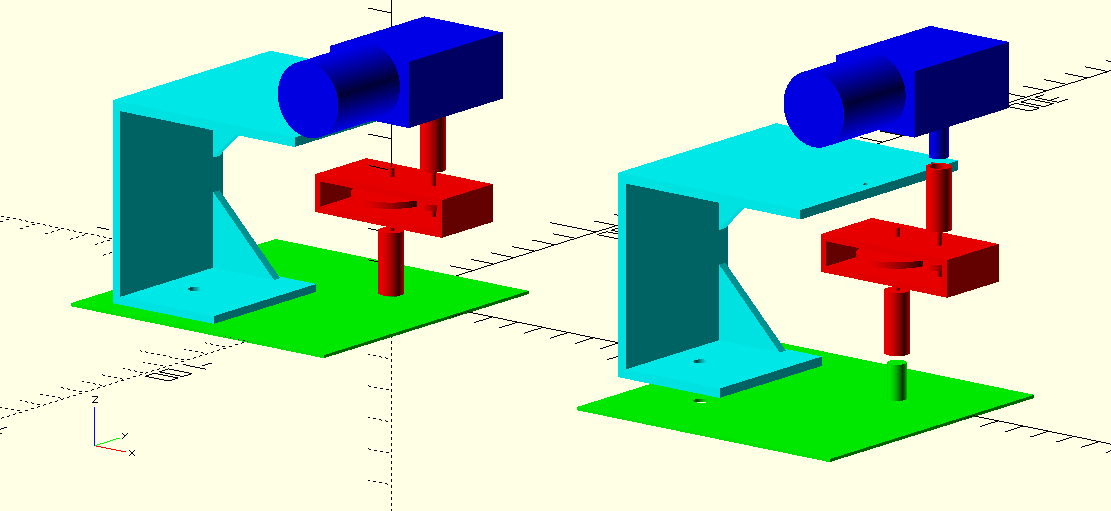
| # | Položka | Popis | linka |
| 1 | Predstavenie | AboutMe | |
| 2 | Príspevok do vedomostnej databázy | KM | |
| 3 | Základné informácie o projekte | Project Summary |
A music printer is a solution that will allow its users to generate 3D models from music and subsequently print them using 3D printer. This idea was created with two primary use cases in mind. Non-academic users will use it to generate interesting 3D models for eanjoyment and aesthetical value. Academic users can use it to compare different audio sequences and their respective attributes.
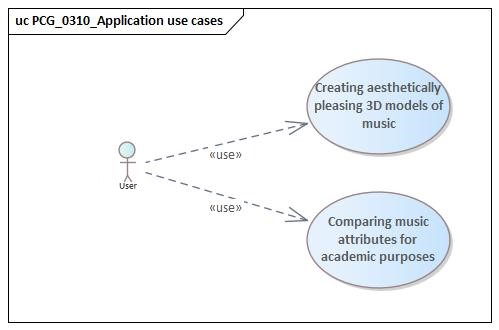
The image below illustrates the usage of our solution in both cases.
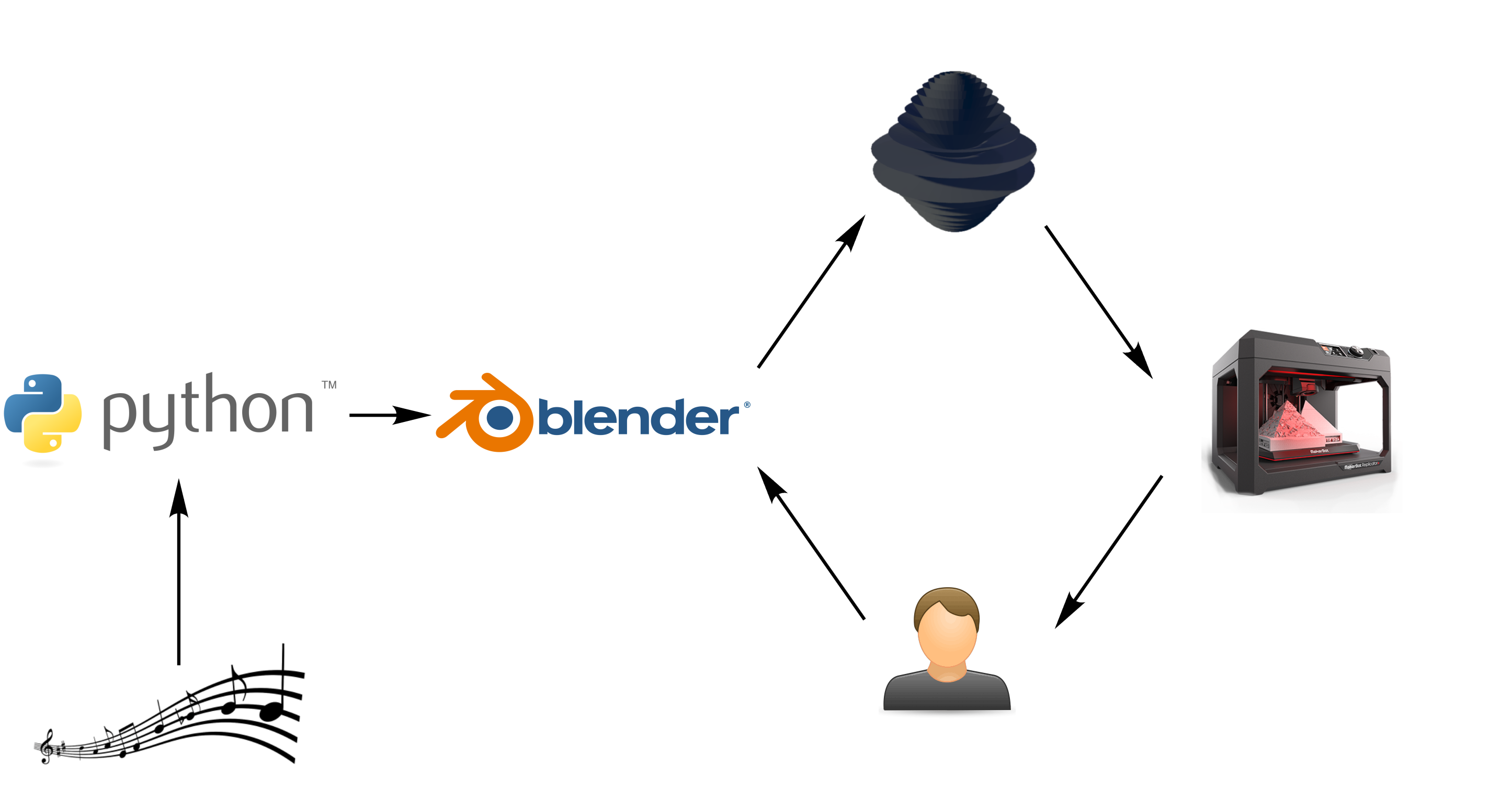
In this gallery, you will find a few example 3D models, that we created with our solution. These audio clips were recorded as short guitar solos with background music.
 |  |  |
|---|---|---|
 |
 |
 |
In this section, we will briefly describe the technical side of our solution.
The image below represents the software architecture of our program used for generating 3D models from music files. The main runner is the main module responsible for the execution of the whole solution. To do so, it uses 3 other modules - Feature extractor, Param normalizer, and Model exporter. Feature extractor can use many modules for feature extraction. All they have to do is realize a simple Metric interface. Each of those modules will be used to extract only a single feature from an input file. Their interaction will be described in the Application execution section. Due to using the blender, it is necessary to use python for implementation.

In order to use this application user will open our provided blender file, the import script that realizes our solution and executes the main runner function. Inside that this will happen: Feature extractor loads music file and extracts music features from it. Param normalizer takes those features as input process them to usable values (so they are not too big or too small). Model exporter module takes those normalized features as its input, creates a 3D model in Blender and export it in STL file.
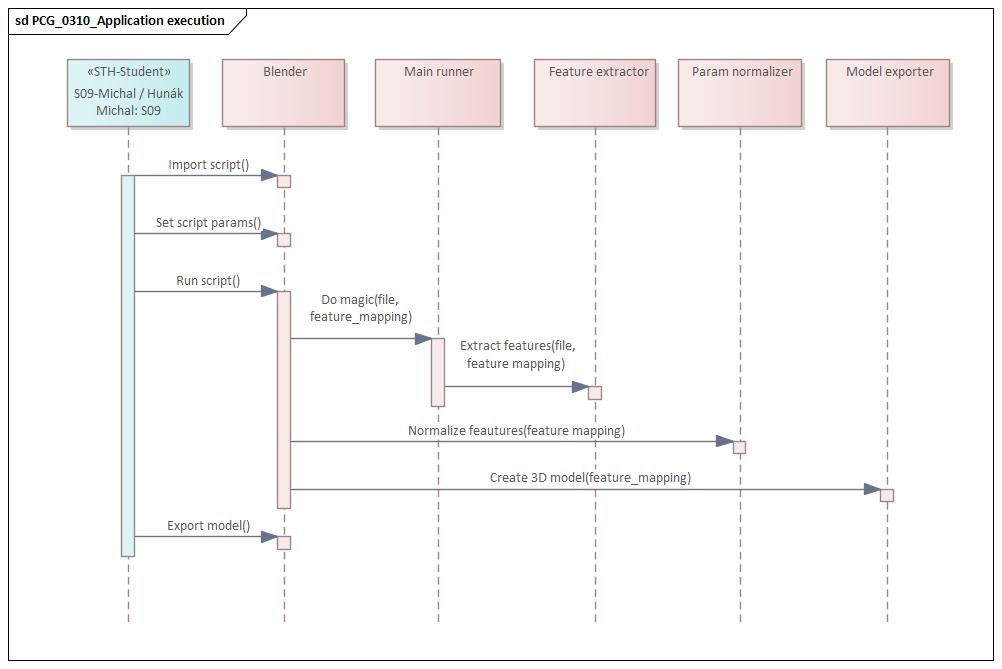
In this section feature, it is shown how feature extraction is executed inside the Feature extractor module. The extractor will use each selected metric (see User manual section) on the provided input file.
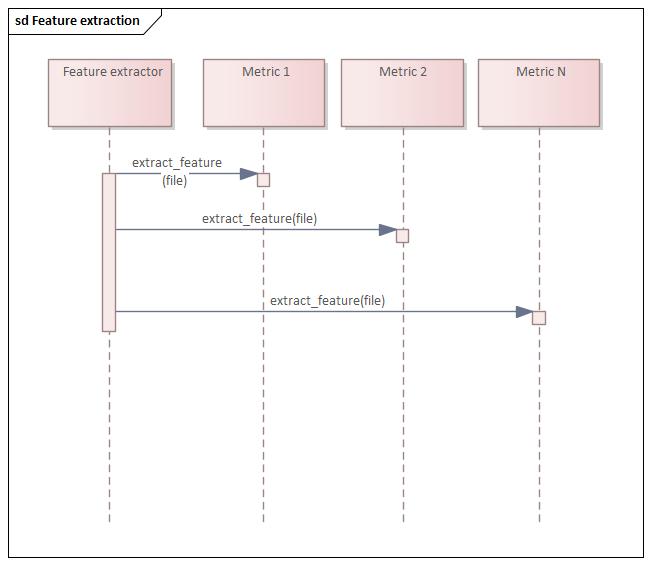
Blender\your_blender_version\python\bin.pip install -r requirements.txt using pip of selected Python.Then you need to open the Scripting tab in the menu.

If it is not opened and loaded automatically you need to open it. Click Open and select the provided python file.

After opening the python file it should look like this.

You need to set mandatory settings in the script. Set input_file as the absolute path to the .wav file you want to process. The absolute path to the output directory is stored in export_basepath. Then you need to set boundaries for model size, default settings in 20 cm max and 2.5 cm min (values are stored in meters). Model generation needs 6 values from the input file, u need to set the function to get these 6 values, choose functions from the script and save them in feature_mapping.

ALT + P.If you want to export it manually or use a different format you need to go to File -> Export -> Stl (or your preferred format).

You don’t need to change any export settings, all is set in provided Blend file

Sample rate or sampling frequency defines the number of samples per second taken from a continuous signal to make a discrete or digital signal. The most common sampling rate is 44.1 kHz or 44 100 Hz. The sample rate is measured in Hz.
Functions:
Duration is the time during which something exists or lasts. Duration measures the length of a given semple. Duration is measured in seconds.
Functions:
A zero-crossing is a point where the sign of a mathematical function (in our case waveform) changes (e.g. from positive to negative), represented by an intercept of the axis (zero value) in the graph of the function. It is a commonly used term in electronics, mathematics, acoustics, and image processing.
Functions:

Tuning is a particular key or set of pitches to which an instrument, especially one with strings, is tuned. Tuning is measured as estimated tuning deviation (fractions of a bin).
Functions:
Linear Prediction Coefficients via Burg’s method. We apply Burg’s method to estimate coefficients of a linear filter on a sample of order 2. Burg’s method is an extension to the Yule-Walker approach, which is known as LPC parameter estimation by autocorrelation.
Functions:
In musical terminology, the tempo is the speed or pace of a given piece. In classical music, the tempo is typically indicated with an instruction at the start of a piece and is usually measured in beats per minute.
Functions:
Onset refers to the beginning of a musical note or other sounds. It is related to (but different from) the concept of a transient: all musical notes have an onset but do not necessarily include an initial transient.
Functions:
The term magnitude can apply both to the scientist's desire to measure and quantify the physical size and energy of the sound wave and also to the listener's subjective evaluation of the loudness and/or volume of the aural experience. Magnitude in a given sample is divided into bins and then desired values are calculated from these bins. Magnitude is measured in dB.
Functions:
Frequency is the number of occurrences of a repeating event per unit of time. It is also occasionally referred to as temporal frequency to emphasize the contrast to spatial frequency, and ordinary frequency to emphasize the contrast to angular frequency. Frequency in a given sample is divided into bins and then desired values are calculated from these bins. Frequency is measured in Hz.
Functions:
Strana 1 z 3